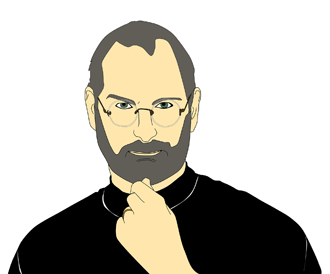25 Challenge Assumptions
Robert Sternberg
An assumption is the “taking of anything for granted as the basis for argument or action” (Oxford English Dictionary, n.d.).
What You’ll Learn:
- How to challenge the assumptions in a writer’s claim
- Some strategies for challenging our own assumptions

Does the following conversation between acquaintances look familiar to you?
Acquaintance 1: You would love this movie. I just know it.
Acquaintance 2: Ok, thanks. I’ll check it out.
Two hours later…
Acquaintance 2 (thinking): What a waste of time. I’ll never get those two hours back.
This could’ve been avoided if Acquaintance 1 had not taken for granted Acquaintance 2’s taste in movies; in other words, if they’d challenged their own assumption first. Doing so might’ve saved Acquaintance 2—not a science fiction fan—the two hours she spent watching Flaming Globes of Sigmund.
Try not to let this happen to you! If you’ve taken anything for granted en route to an argument, action, or claim,
- stop;
- retrace your steps; and
- challenge your underlying assumption.
Challenging the Assumption in a Writer’s Claim

On June 12, 2005, the late Steve Jobs delivered a commencement address at Stanford University. Its main message? “You’ve got to find what you love” (para. 15).
Read/view the source.
In Jobs’s speech, he preaches the concept of self-reliance. This is illustrated by his decision to drop out of college. Jobs’s faith in himself was so strong that he believed he could achieve his goals without institutional support. And he did. Jobs encourages his audience of recent graduates to have the same reliance and faith in themselves:
Your time is limited, so don’t waste it living someone else’s life. Don’t be trapped by dogma—which is living with the results of other people’s thinking. Don’t let the noise of others’ opinions drown out your own inner voice. And most important, have the courage to follow your heart and intuition. They somehow know what you truly want to become. Everything else is secondary. (para. 23)
Jobs’s first story, on “connecting the dots,” is about gaining the rewards of patience. After dropping out of college in just six months, Jobs stayed on campus for another 18 months as a “drop-in.” During this time, he “dropped in” on classes, like the one on calligraphy that would later influence Apple’s “beautiful typography.” About this period of his life, Jobs says the following: “And much of what I stumbled into by following my curiosity and intuition turned out to be priceless later on” (para. 6).
Richardson and Arthur (2013) challenge the assumption in Jobs’s advice here. According to them:
Although Jobs was able to spend time searching for his calling, for some—if not most—people, responsibilities to others and social and economic circumstances do not allow them to search for their calling, let alone fulfill it (see Berg, Grant & Johnson, 2010). Similarly, as Jobs himself acknowledged, he found his calling early in life whereas others may not. (para. 26)
By encouraging his audience of recent graduates to patiently follow their curiosity and intuition, Jobs is assuming they have the same amount of time and freedom from responsibilities as he did. As a result, he may be taking for granted his audience’s diverse “social and economic circumstances.”
In Jobs’s second story, about “love and loss,” he says “that getting fired from Apple was the best thing that could have ever happened to me. The heaviness of being successful was replaced by the lightness of being a beginner again, less sure about everything. It freed me to enter one of the most creative periods of my life” (para. 13).
Not only did getting fired lead Jobs to fall in love with his future wife, but it also led him to start two successful companies before his triumphant return to Apple. Based on this experience, he urges his audience not to lose faith in themselves during difficult times.
Richardson and Arthur (2013) challenge the assumption in this part of Jobs’s speech as well:
Regarding the proclaimed positive side of involuntary job loss, it should be acknowledged that Jobs was in a very different situation than most people who lose their job. Indeed, recent research has suggested that most people are likely to experience lower self-esteem, depression, and health problems after losing their job (Zeitz et al., 2009). (para. 27).
The authors then paraphrase the following point: “[W]hereas Jobs welcomed his newfound freedom to explore and craft further career opportunities, for many people the change and uncertainty incurred during job loss is more likely to be a source of stress than liberation (Halbesleben & Buckley, 2004)” (para. 27).
By encouraging his audience of recent graduates to embrace the times when, as he puts it, “life hits you in the head with a brick” (para. 15), Jobs is assuming that they will be able to rebound as successfully as he did. As a result, he may be taking for granted that other people will find opportunity in a job loss, too.
Some Strategies for Challenging Our Own Assumptions
Steve Jobs was an incredibly successful person in his lifetime. But, as we learned in the previous section, not even he could avoid making assumptions. That’s because we all make them. No matter who we are or what we’ve accomplished, assumptions are a part of life. So, let’s take a look at some strategies for challenging our own assumptions.
1. Practise the Assumption-Challenging Habit
An effective method of grammar instruction is based on correction. For example, to learn to avoid run-on sentences in your own writing, you may find it effective to correct run-on sentences in someone else’s. This same method can be used for assumptions. The more we practise challenging assumptions in someone else’s writing, the better we’ll become at challenging those that may appear in our own.
As was demonstrated by Julia Richardson and Michael B. Arthur’s commentary on Steve Jobs’s commencement speech, challenging assumptions means figuring out what the author might have taken for granted en route to a claim.
2. Practise Iterative Design and Peer Review
If Steve Jobs had given a draft of his speech to Richardson and Arthur for advanced feedback, they could’ve flagged his assumptions listed above. At that point, Jobs might’ve gone back and revised his points.
Assumptions are like blind spots in our own thinking. Which is why we need others—friends, family members, teachers, and peers—to help us see what we might be taking for granted. Therefore, review the material covered in Practice Iterative Design and Peer Review. With the help of others, we can challenge our own assumptions.

Tip
Assumptions are tricky because they can sometimes be correct. For example, a college professor assigns her automotive students a reading about the history of cars because she assumes they will like it, given their program of study. The first time, her assumption is correct. The second time, however, she discovers what she’d taken for granted: not all automotive students are interested in cars as a historical subject. Now, before assigning this reading again, she polls her class first.
3. Practise Asking before Assuming

Here’s an alternate version of the conversation we looked at earlier.
Acquaintance 1: Do you like science fiction movies?
Acquaintance 2: No. That’s my least favourite movie genre.
Acquaintance 1: Good to know! I was almost going to recommend that you see Flaming Globes of Sigmund.
Similarly, in the example of the college professor and her automotive students, she asks them about their interest in the history of cars first, before assigning that particular reading. As for Steve Jobs, if he’d done some research on the effects of involuntary job loss first, maybe he wouldn’t have put such a positive spin on getting fired.
An assumption is like jumping to a conclusion. Especially when it’s a big jump, you don’t want to take anything for granted. Instead, take all the necessary precautions first, which means ask yourself and others some key questions. If you do that, your jump—i.e. your conclusion, claim, argument, or action—might be a success!
Try It!
In the following claim, consider what the author might be taking for granted.
Here are some key takeaways from our topic on challenging assumptions:
- An assumption is “the taking of anything for granted as the basis for argument or action” (Oxford English Dictionary, n.d.).
- Practise the assumption-challenging habit: challenge the assumption in a writer’s claim.
- Keep assumptions in mind when practising iterative design and peer review.
- Try asking before assuming.
See related subtopics in Build Your Toolkit and Share.
References
See Challenge Assumptions References
Expressing someone else’s idea in your own words, capturing the same meaning in about the same length, but with new words.


In “‘Just Three Stories’: The Career Lessons Behind Steve Jobs’ Stanford University Commencement Address,” authors Julia Richardson and Michael B. Arthur (2013) challenge the following assumption in Jobs’s message of self-reliance: “Whereas Jobs was in a situation where he could drop in and out of classes and presumably had parental support to do so, others may not be quite as fortunate due to their social and economic circumstances” (para. 25).
In other words, it was Jobs’s good fortune that enabled him to rely on himself, and in preaching his message of self-reliance to others, he assumes that they are as fortunate as he was; as a result, Jobs may be taking for granted the idea that “in all careers there are constraints on which opportunities can be accessed” (King et al., 2011, as cited in Richardson, Arthur, 2013, para. 25).